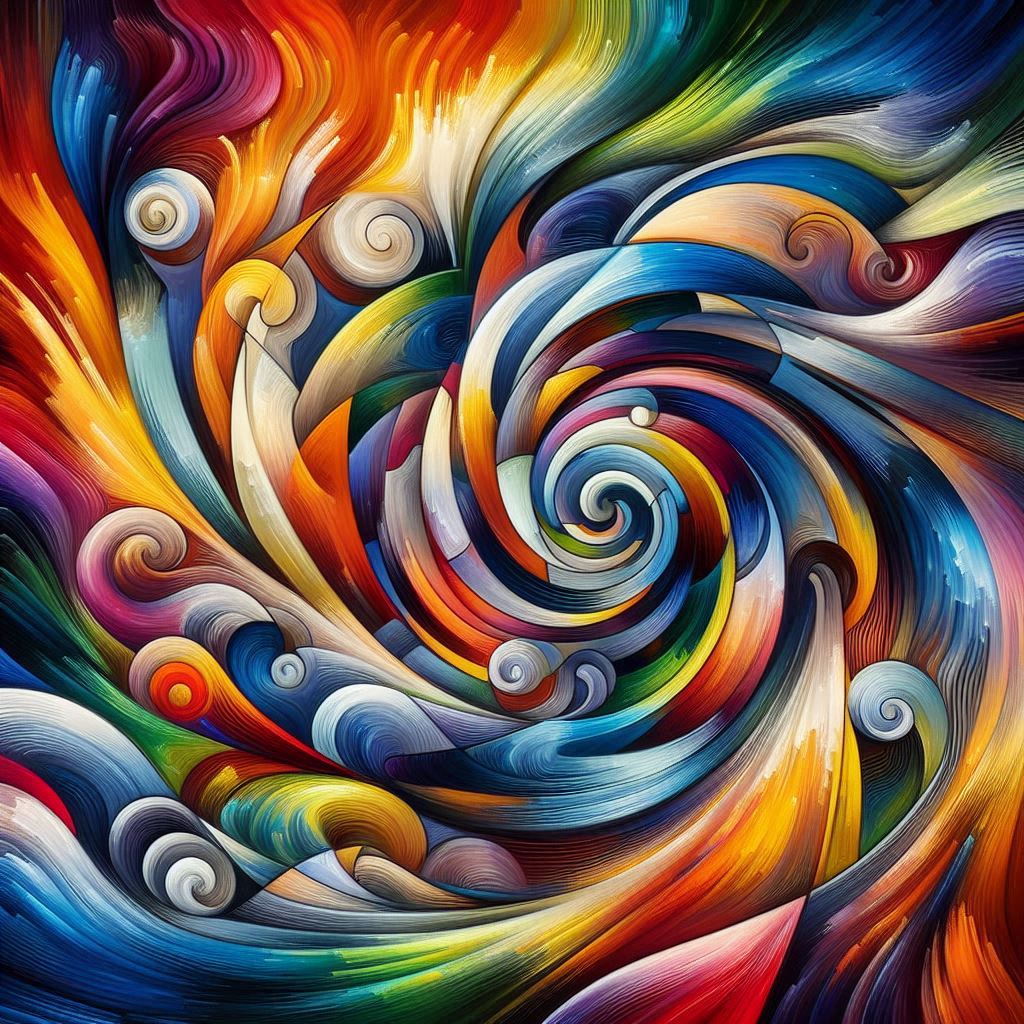Abstract art didn’t just spring up out of nowhere—it’s got its roots deep in the artistic soil. Back in the day, artists were all about realism, but around the early 20th century, a bunch of innovators started to mess with the status quo. They wanted to capture more than just what was right in front of them. Kandinsky, Mondrian, and Pollock? Yeah, these are the folks who took colors and shapes to places they’d never been before. They changed the game, pushing past what art was supposed to be.
These trailblazers made a legacy of tearing away the careful curtains of traditional art. Kandinsky said ‘adios’ to realistic depiction in favor of pure emotion and spirituality. Mondrian played with lines and primary colors, while Pollock? His drip technique was all about energy in motion. By flipping the script, they encouraged self-expression and exploration in ways that no one thought possible before.
In stepping away from just painting what you see, abstract art opened the doors for a ton of new possibilities. It’s a universal language—no need for translations here. Ever felt something when you looked at a painting without totally understanding it? That’s the power of abstraction, speaking to everyone regardless of where you’re from or what language you speak. The wonder of abstract art is how it bypasses words, tapping directly into emotion.
By rebelling against the norms, abstract art set the stage for new forms of artistic expression. No need to stick to the precisely painted lines anymore. Artists now had the canvas as their playground, exploring textures, colors, and unconventional materials. This freedom didn’t just make art galleries more exciting; it resonated with people seeking unorthodox ways to reflect and interpret the world around them.
Harnessing Creativity: The Impact of Abstract Art on Human Expression
Abstract art’s magic lies in its ability to speak to our core without explaining itself. Focusing on color, form, and gestures, allows viewers to interpret the images in their unique way. This lets the imagination run wild, making the experience completely personal.
Artists who dive into abstract art often find themselves exploring new facets of their creativity. This kind of art rocks traditional boundaries and lets artists express emotions or concepts that can’t be captured with realistic portrayals. Instead of sticking to the facts, they’re free to play with ideas and visualize feelings, opening up new avenues of personal growth and expression.
Beyond the canvas, abstract art shakes up how we think. It encourages creative problem-solving by pushing us to think outside the box. The psychology of abstraction is fascinating. Engaging with abstract work often means piecing together meaning from colors and shapes, a process that flexes our mental muscles. Plus, making sense of something that’s not immediately obvious can improve cognitive flexibility and creative thinking—key skills for problem-solving.
On a grander scale, abstract art helps connect different narratives and histories, offering cultural insights and personal reflections. It’s not just about looking at a splash of paint. These works carry stories and emotions, often channeling diverse cultural heritages and serving as a platform for underrepresented voices. Through abstraction, these stories can transcend their origins and reach a broad audience.
By freeing themselves from the literal, abstract artists have brought about fresh perspectives and revolutionary practices. They’ve contributed not just to visual culture but also to how we think about identity, politics, and society. Their work reminds us that self-expression thrives in the uncharted, in the realm where the conscious mind rarely treads.
Abstract Insight: Role in Modern Society and Cultural Dialogue
Today, abstract art is more than just a staple in galleries—it’s a pervasive part of cityscapes and modern venues. These pieces can be found on the sides of buildings, in public spaces, and even integrated into urban renewal projects. This widespread presence turns city streets into open-air galleries, introducing art to everyone, even those who might never visit a traditional gallery.
One of the biggest draws of abstract art in the modern era is its role in social commentary. By breaking free from realistic depictions, abstract art can address complex political and social issues in ways that words often can’t. The flexibility and openness of abstract art invite viewers to interpret and question, fostering conversations about important topics.
Education is another frontier where abstract art makes waves. Art curriculums across schools are starting to embrace abstract art for its capability to cultivate creativity and critical thinking. By exposing students to abstract works, educators encourage them to explore different perspectives and develop their interpretations, which can be applied to other areas of study and life.
Today’s abstract artists are pushing the boundaries even further, incorporating new technologies and multimedia techniques. This innovation isn’t just about aesthetic evolution—it’s about engaging audiences in interactive experiences that challenge the conventional viewer-art interaction. Artists are using digital media and installations to create immersive environments that transform how we experience art.
In modern movements, these contemporary abstract artists continue to play a crucial role in evolving the art scene. They build upon the foundations laid by their predecessors, tapping into cultural dialogues and personal narratives that resonate with today’s audiences. Whether through vivid installations or subtle minimalistic designs, these artists engage viewers in a dialogue that spans generations and borders, highlighting the universal power of abstract art.

